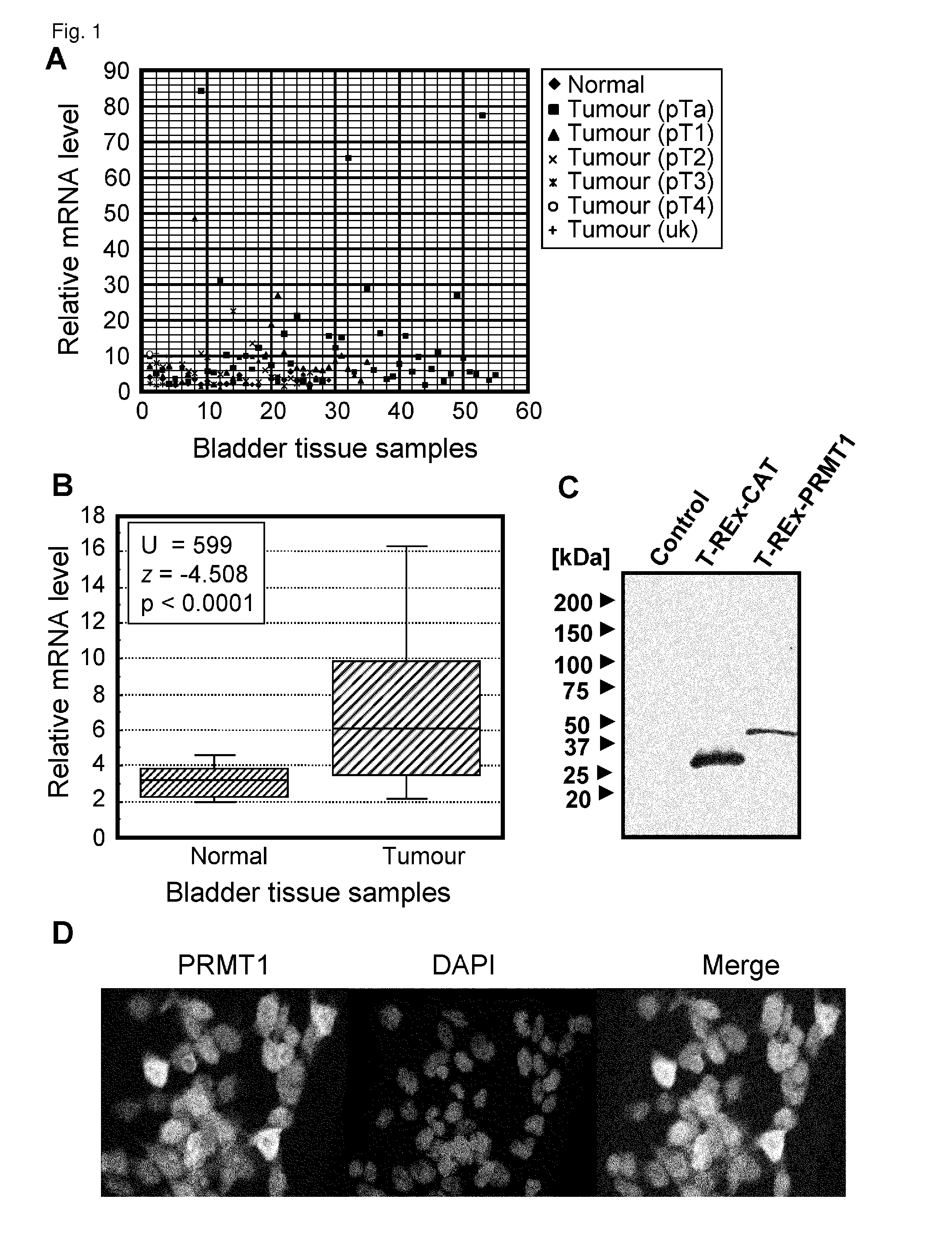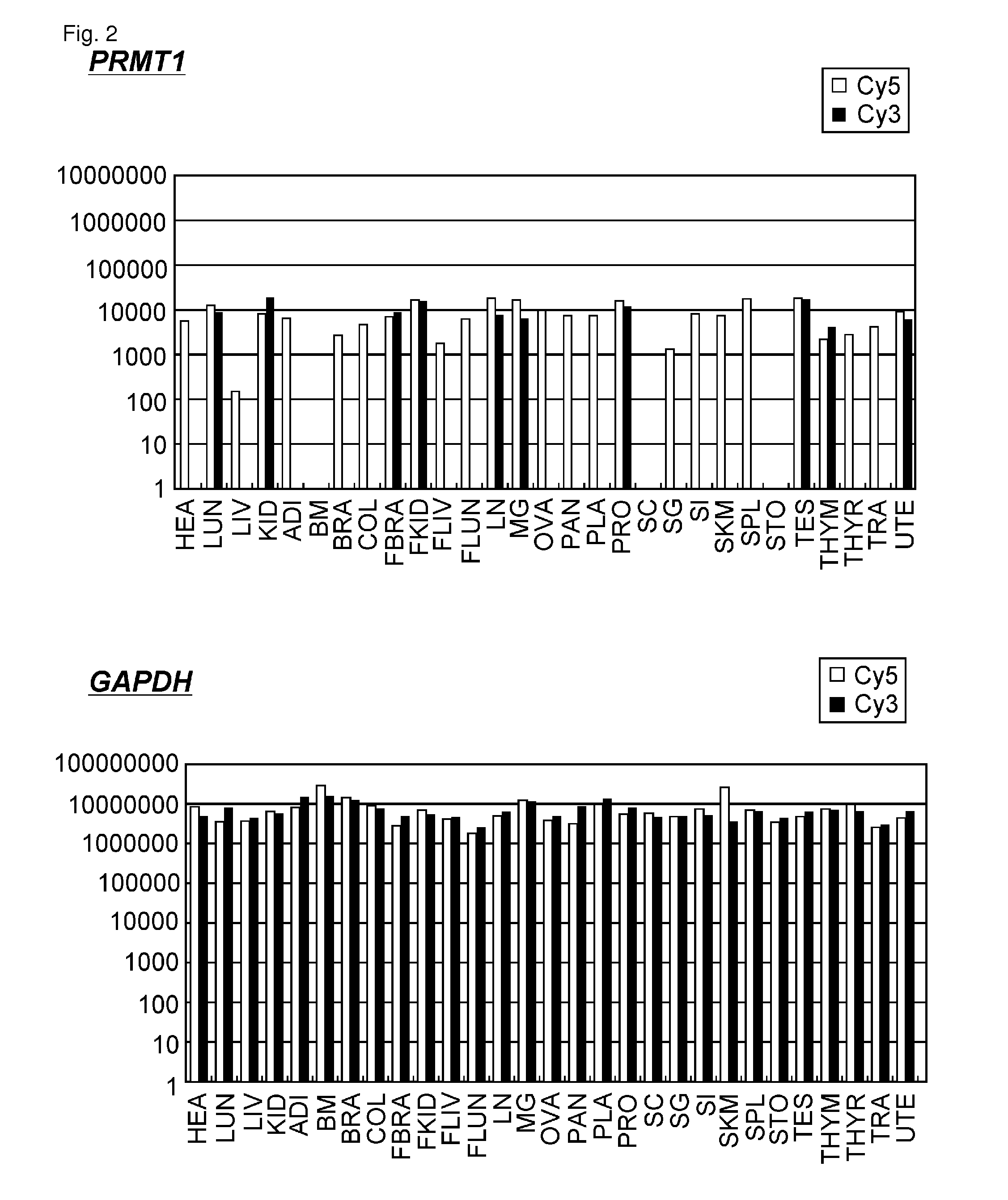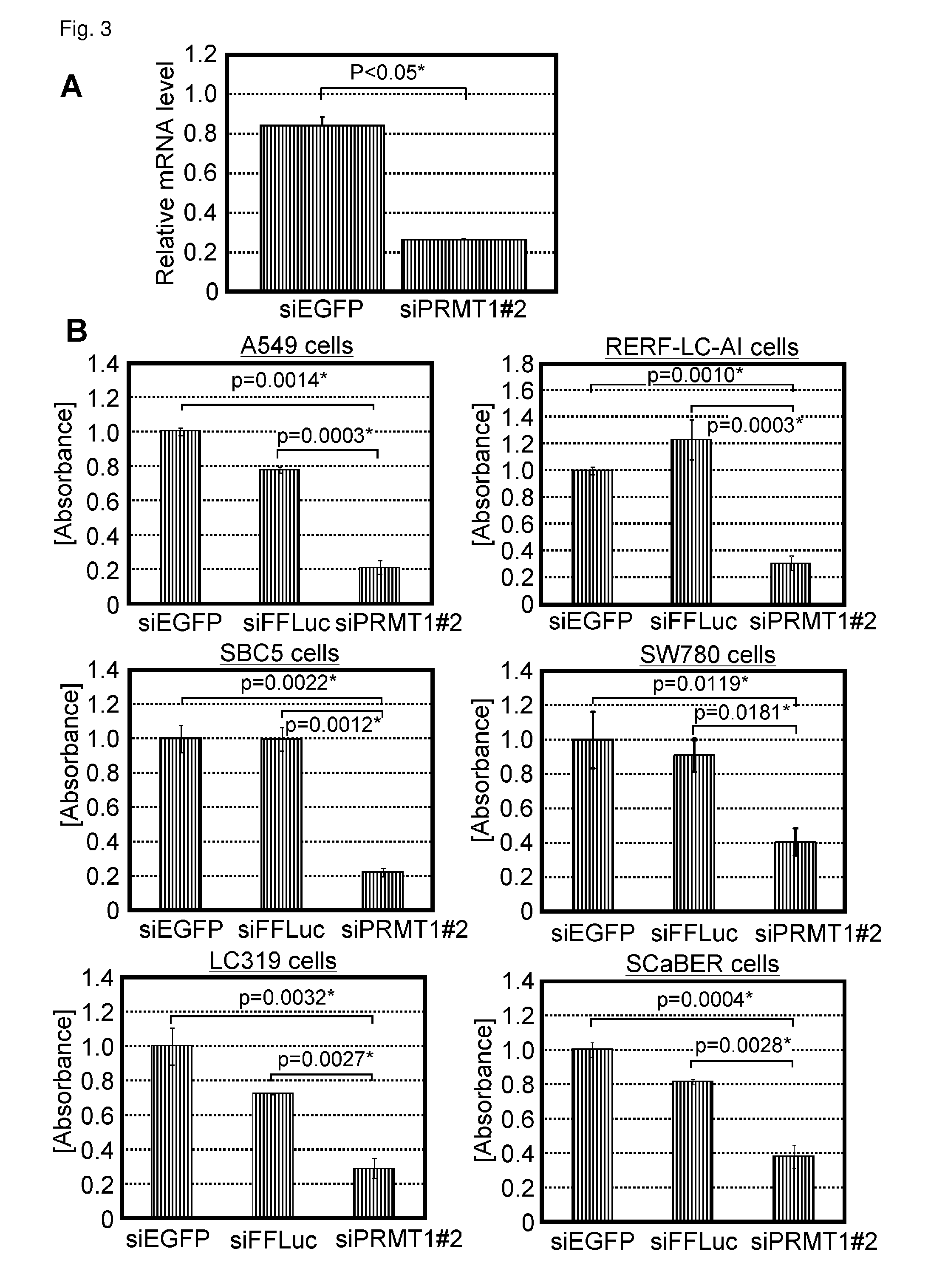PRMT1 for target genes of cancer therapy and diagnosis
a cancer therapy and target gene technology, applied in the field of detecting and diagnosing a predisposition to developing cancer, can solve the problems that the general understanding of the relationship between abnormalities of histone methylation and cancer has not yet been clarified, and achieves the effects of suppressing cancer cell growth, reducing the risk of cancer, and maintaining the viability of cancer cells
- Summary
- Abstract
- Description
- Claims
- Application Information
AI Technical Summary
Benefits of technology
Problems solved by technology
Method used
Image
Examples
example 1
General Methods
[0408]Tissue samples and RNA preparation.
[0409]126 surgical specimens of primary urothelial cell carcinoma were collected, either at cystectomy or trans-uretheral resection, and snap frozen in liquid nitrogen. Thirty-four specimens of normal bladder urothelium were collected from areas of macroscopically normal urothelium in patients with no evidence of urothelial malignancy. A total of 30 sections of 30 micro-m (micro meter) were homogenized for RNA extraction and two 7 micro-m ‘sandwich’ sections adjacent to the tissue used for RNA extraction were sectioned, stained and assessed for cellularity and tumor grade by an independent consultant urohistopathologist. Additionally, the sections were graded according to the degree of inflammatory cell infiltration (low, moderate and significant). Samples showing significant inflammatory cell infiltration were excluded (Wallard M J, et al., Br J Cancer 2006; 94:569-577).
[0410]Total RNA was extracted using TRI Reagent™ (Sigma, ...
example 2
Expression Levels of PRMT1 in Clinical Cancer Tissues and Subcellular Localization of PRMT1 Proteins
[0426]The initial results comparing expression levels of several PRMT1 family genes using a small number of clinical bladder samples showed the significant difference of PRMT1 expression between normal and tumor tissues (data not shown). Therefore, further analysis of a large number of clinical samples was carried out to quantitatively measure transcript levels of PRMT1. 121 bladder cancer and 24 normal control samples were analyzed (FIGS. 1A and B). The expression levels of PRMT1 were found to be significantly higher in tumors compared with normal tissues (P<0.0001). The expression profile of PRMT1 was also checked in many types of cancer using a number of clinical samples from Japanese subjects by cDNA microarray (Table 3). The expression levels of PRMT1 are significantly up-regulated in diffuse-type gastric cancer, colorectal cancer, breast cancer, esophageal cancer, small cell lun...
example 3
Expression Levels of PRMT1 in Human Normal Tissues
[0431]The gene-expression profiles of PRMT1 were analyzed in 25 adult and 4 fetal human tissues on the cDNA microarray, using a mixture of poly(A)+ RNAs from all 29 tissues as a control to calculate the relative expression ratio (Cy5 / Cy3) of each of the 36864 genes on the array. The intensity of each hybridization signal was calculated photo-metrically by the Array Vision computer program and background intensity was subtracted. Normalization of each Cy3- and Cy5-fluorescence intensity was performed using averaged signals from the 52 housekeeping genes. The detailed analytical result indicated that expression levels of PRMT1 in all checked normal tissues were significantly low compared with those of GAPDH (FIG. 2). As average signal intensity of PRMT1 in all normal tissues was around 10000, this value was relatively low among the 36864 genes. Consequently, PRMT1 was regarded as a good candidate of cancer therapy.
PUM
| Property | Measurement | Unit |
|---|---|---|
| pH | aaaaa | aaaaa |
| molecular weight | aaaaa | aaaaa |
| molecular weight | aaaaa | aaaaa |
Abstract
Description
Claims
Application Information
 Login to View More
Login to View More - R&D
- Intellectual Property
- Life Sciences
- Materials
- Tech Scout
- Unparalleled Data Quality
- Higher Quality Content
- 60% Fewer Hallucinations
Browse by: Latest US Patents, China's latest patents, Technical Efficacy Thesaurus, Application Domain, Technology Topic, Popular Technical Reports.
© 2025 PatSnap. All rights reserved.Legal|Privacy policy|Modern Slavery Act Transparency Statement|Sitemap|About US| Contact US: help@patsnap.com



